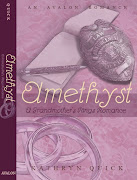At last month's writer’s meeting, before critique, a discussion rose on the proper use of the comma, a boring topic, indeed, and one, I must confess, I know little about.
Notice all the commas? Anyone know if they are right?
I consulted Copyediting, A Practical Guide by Karen Judd, the "bible" I was given when I began work as a small non-fiction publishing house. What follows is a summary of the proper use of the comma. (I know, yawn, but editors do like a clean manuscript,)
A comma is used in compound sentences usually before the conjunction. Refresher - a compound sentence is made up of two more distinct sentences, each able to stand alone. However, you need not use the comma is the two clauses are closely related or if the second relies on the first to make sense. Hint - if it sounds better read aloud with a comma pause, use it.
Use a comma after an introductorial adverbial clause. When it rains, I feel sad.
Use a comma after an introductorial infinitive phrase. To get published, you must actually write something and submit it.
Use a comma after a long introductory phrase. After nine long years of trying and many rejections, I finally got published.
Use a comma after a short introductory phrase if confusion would result without it. In 2010, 150+ writers were members of Liberty States Fiction Writers.
Confused yet? Wait. It gets worse.
Use a comma after a parenthetical element that serves to break up continuity. When I was learning to edit, I learned, among other things, that the use of a comma can be confusing.
Use a comma between coordinating adjectives if the word and could logically be read between them. LSFW hosts a popular, informative conference each spring. (Popular and informative). As opposed to not using a comma to separate an adjective from a word group. The speaker stood on a black shaky platform (not black and shaky platform, not that it would ever happen at the conference.)
Use commas around nonrestrictive elements. My manuscript, which is a contemporary romance, is at Avalon.
Do not use commas in restrictive clauses using that instead of which. The manuscript that is a historical romance is not at Avalon. (Only that manuscript, not some other).
Use commas with appositives. Refresher - an appositive is a word or group of words that renames the noun or pronoun it follows. Kathye Quick, a founding member of Liberty States Fiction Writers, writes contemporary series romance for Avalon.
If all the above isn't enough to absorb, there are a whole lot of other uses of the commas to consider when writing. There are rules for quotations, transitions, special elements, antiethical elements, series, adverbial clauses and more. After trying to distill all the remaining uses of the commas into a good and entertaining paragraph without luck, I gave up.
So while I'm sure you all now have comma overload short-circuiting your brain, the best advice I have for you is when in doubt, read the sentence out loud. A comma indicates a pause. I you would pause in speaking, pause in your writing. It's all really just a judgment call in most cases.
















